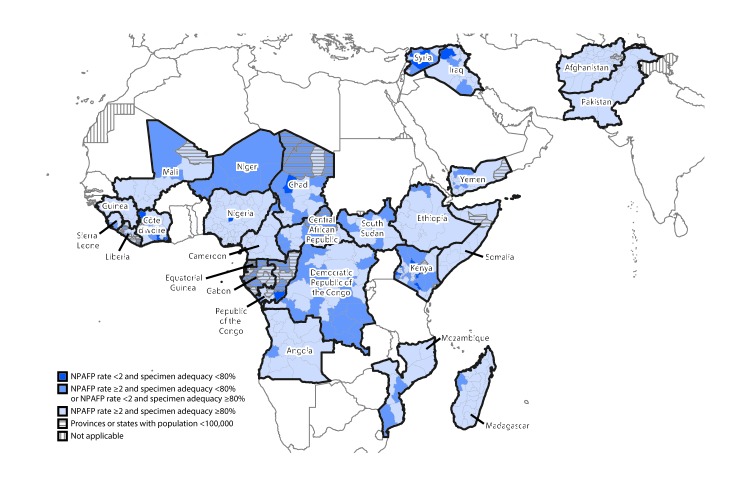FIGURE.
Combined performance indicators for the quality of acute flaccid paralysis surveillance in subnational areas (states and provinces) of 26 countries that had poliovirus transmission during 2011–2017 or were affected by the Ebola outbreak in West Africa during 2014–2015 — World Health Organization African and Eastern Mediterranean Regions, 2017*,†
Abbreviations: AFP = acute flaccid paralysis; NPAFP = nonpolio AFP.
* The Global Polio Eradication Initiative has set the following targets for countries with current or recent wild poliovirus transmission and their states/provinces: 1) NPAFP detection rate of ≥2 cases per 100,000 persons aged <15 years per year and 2) adequate stool specimen collection from ≥80% of AFP cases, with specimen adequacy assessed by timeliness and condition. Timeliness was defined as two specimens collected ≥24 hours apart (≥1 calendar day) and both within 14 days of paralysis onset. Good condition was defined as specimens arriving without leakage or desiccation in a maintained reverse cold chain at a World Health Organization-accredited laboratory.
† Data are for AFP cases with onset during 2017, reported as of February 22, 2018.

